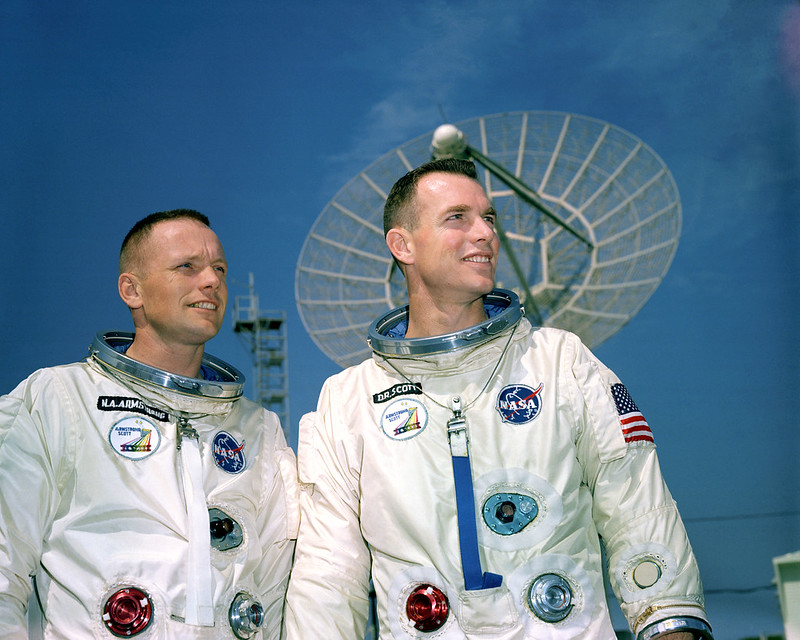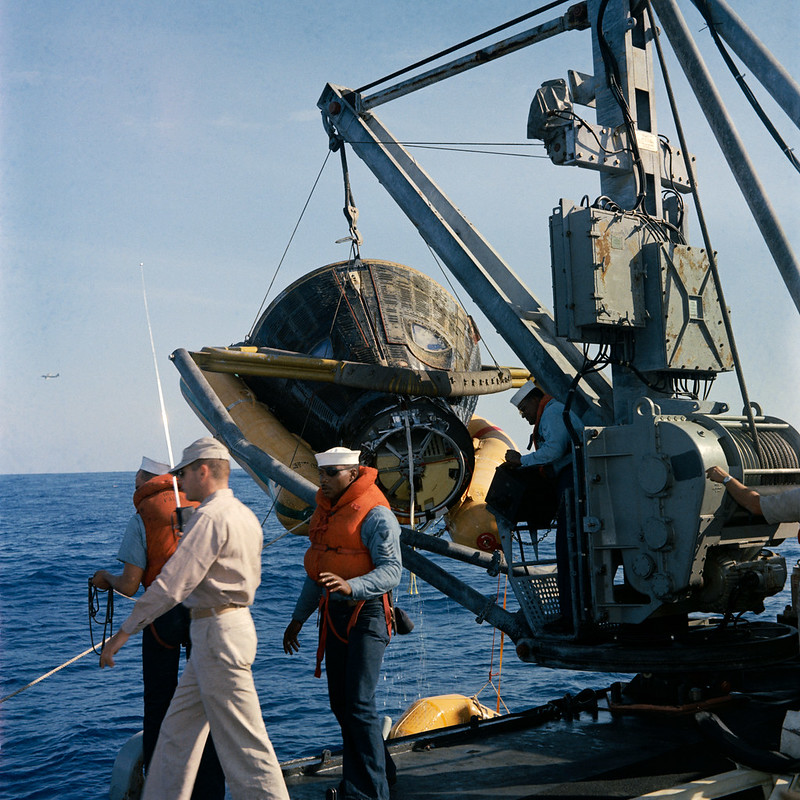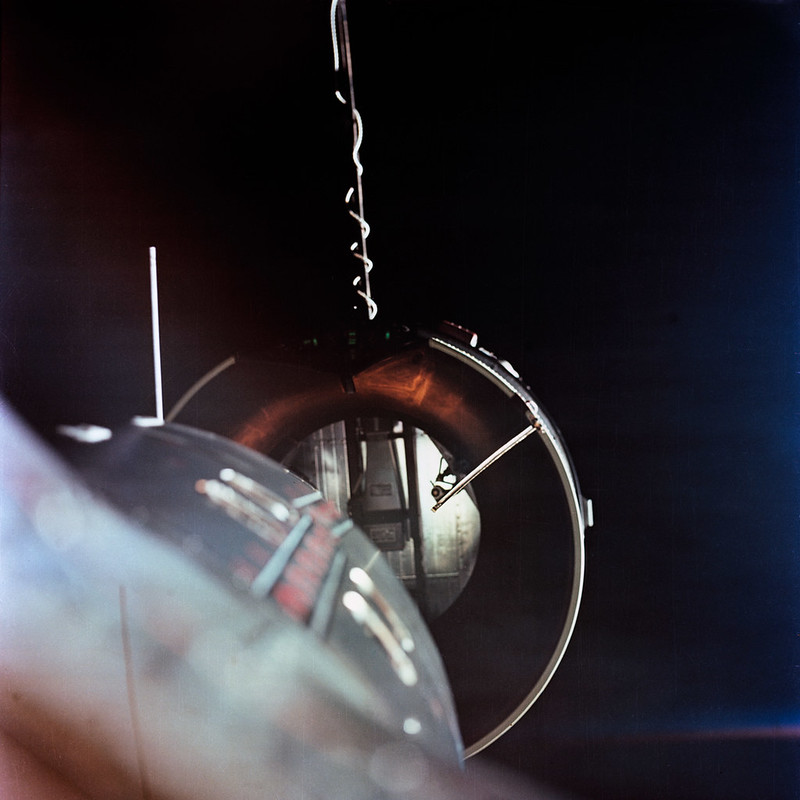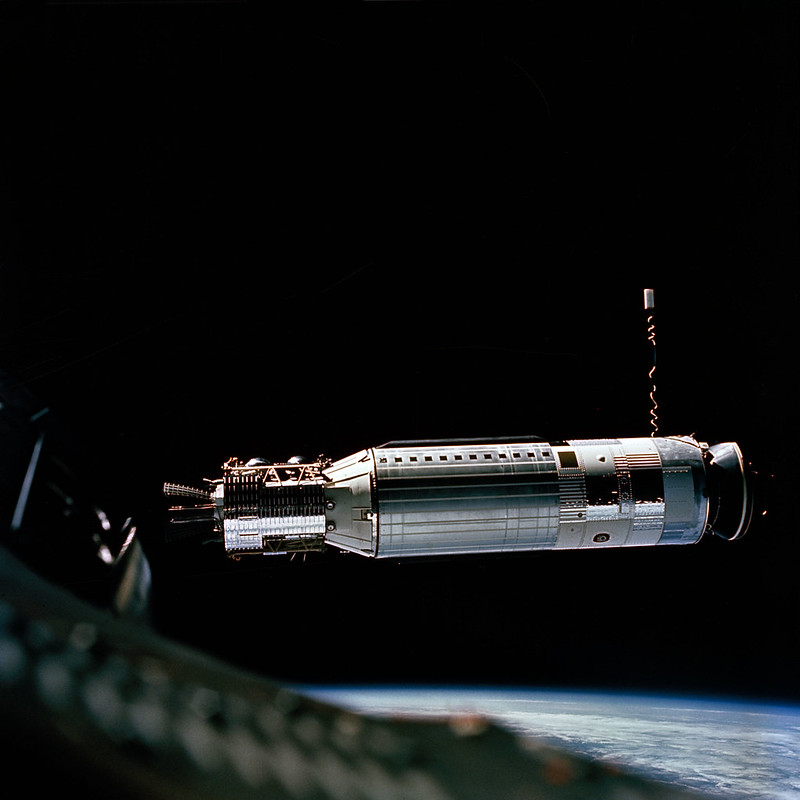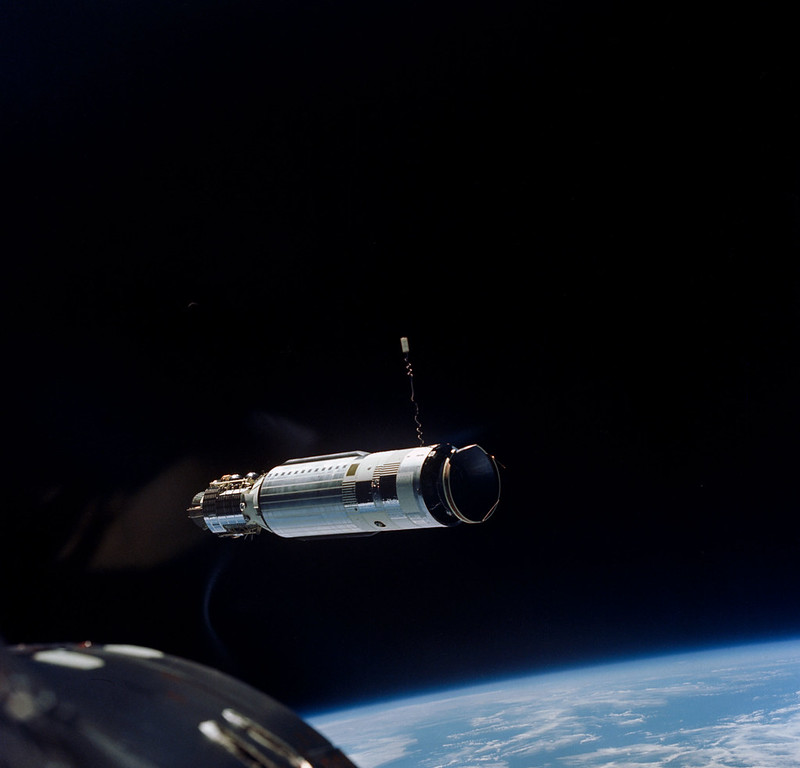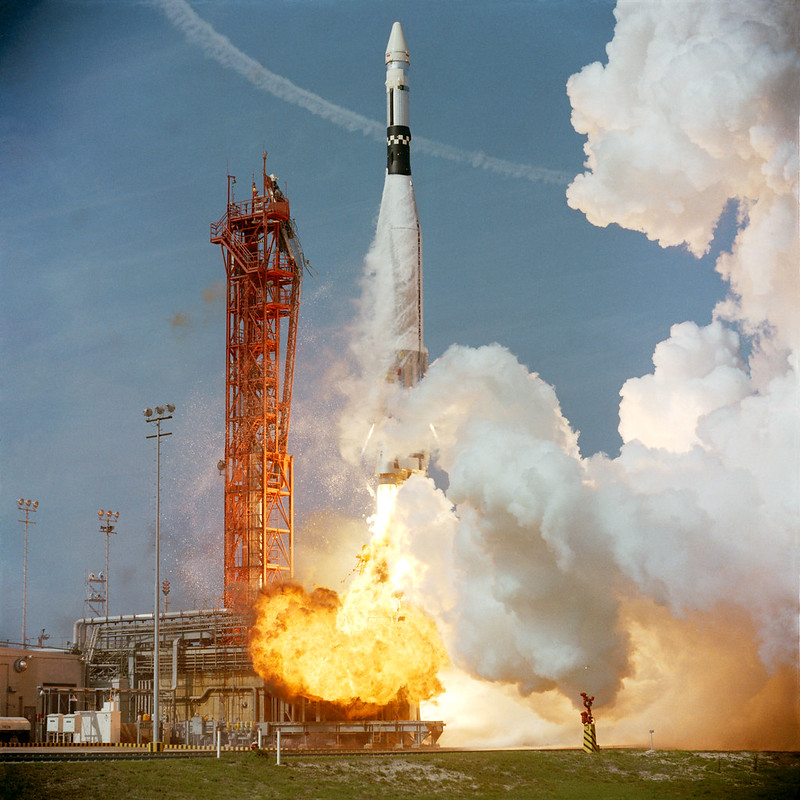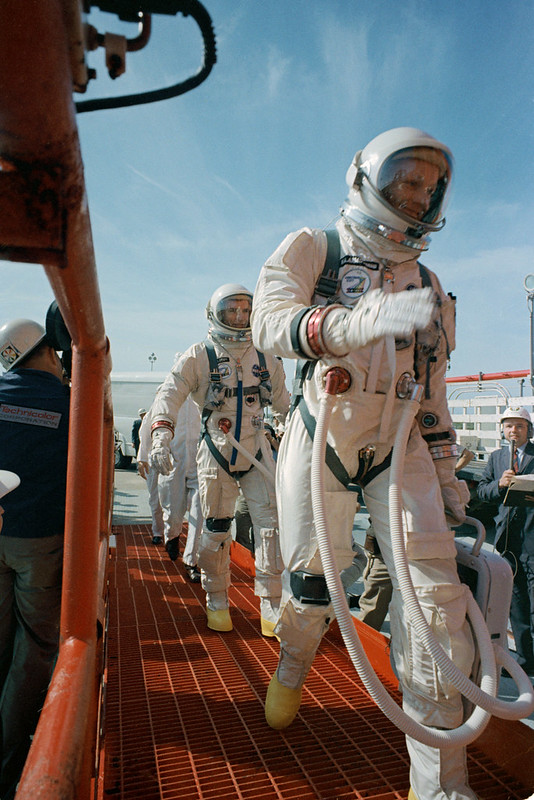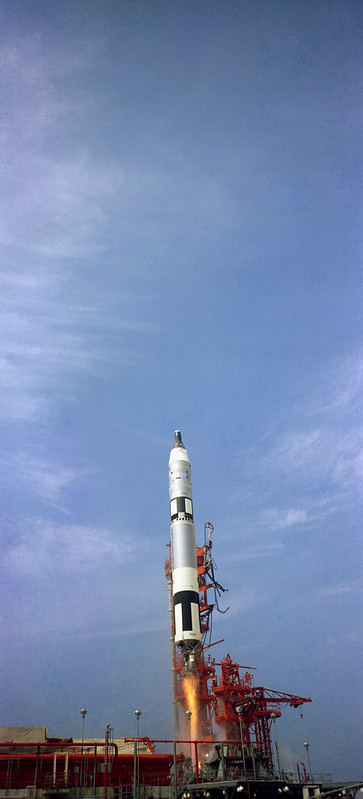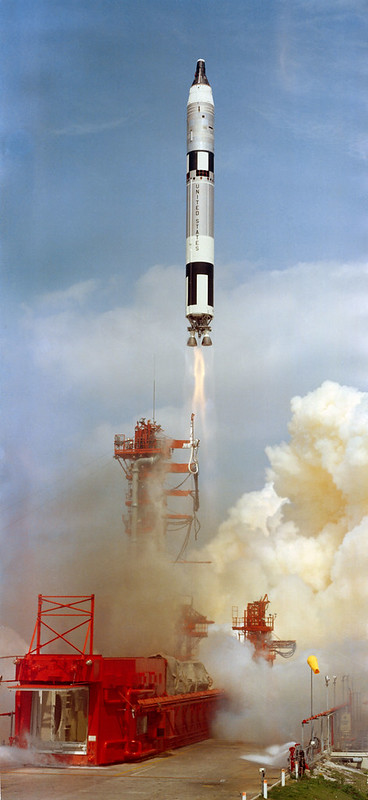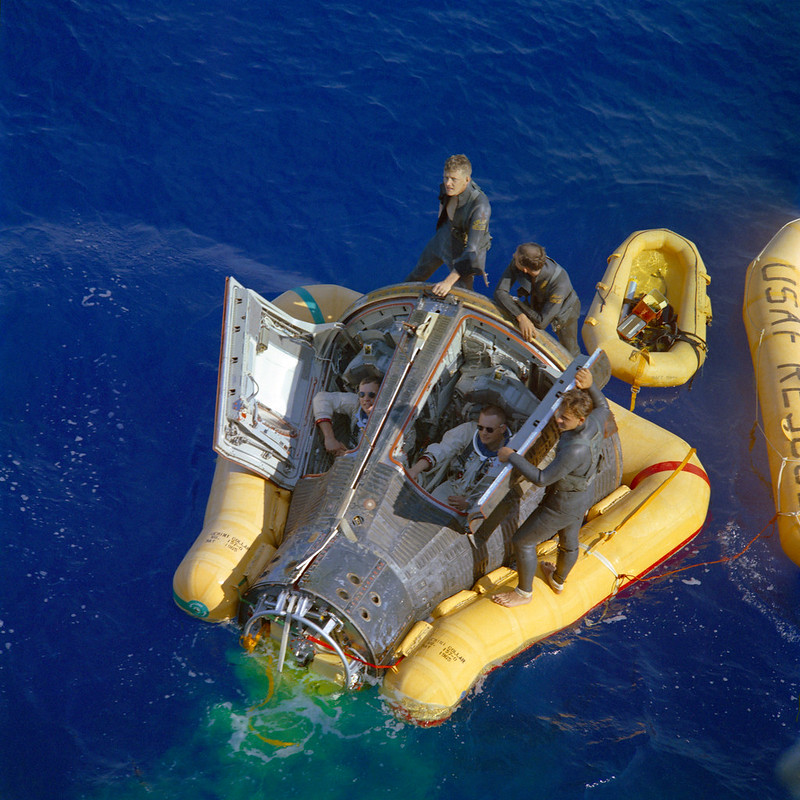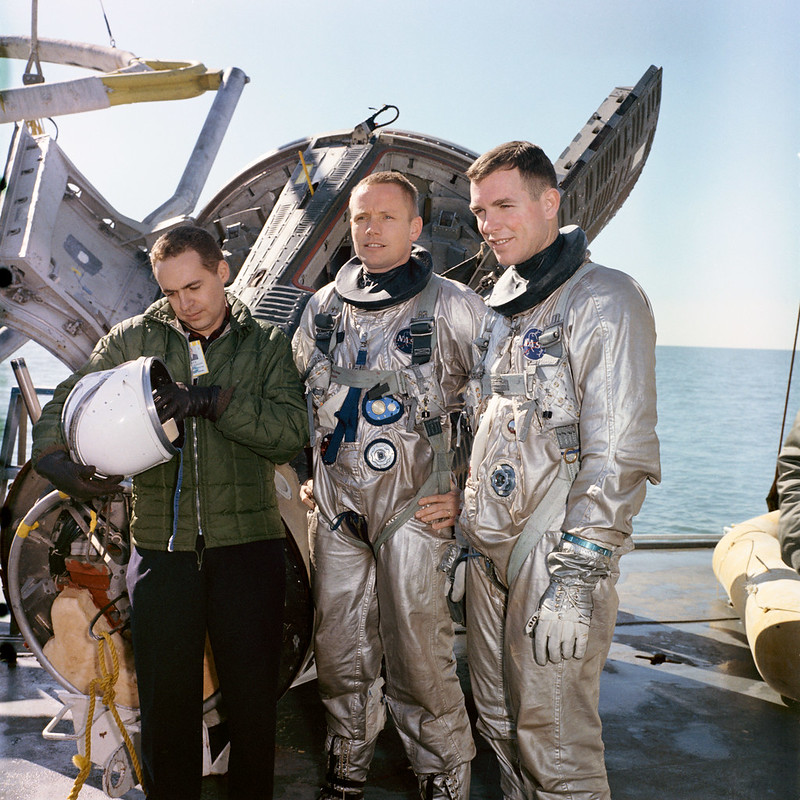Gemini 8 Fact Sheet
By Cliff Lethbridge

Gemini 8 (NASA Code: GT-8)
Launch Date: March 16, 1966
Launch Time: 11:41:02 a.m. EST
Launch Site: Launch Complex 19
Launch Vehicle: Gemini-Titan II GLV-8 (GT-8)
Capsule: Gemini Spacecraft Number 8
Capsule Nickname: None
Crew:
Neil A. Armstrong, Command Pilot
David R. Scott, Pilot
Back-up Crew: Conrad, Gordon
Mission Duration: 10 Hours, 41 Minutes, 26 Seconds
Number of Orbits: 7
Recovery: U.S.S. L.F. Mason (Pacific Ocean)
Mission Summary:
Gemini 8 marked the first successful dual launch and docking with the Gemini Agena Target Vehicle (GATV), completing the world’s first on-orbit docking of two spacecraft. The mission was originally scheduled for three days, but was aborted on the first day in space.
The Gemini 8 GATV was launched as the second stage of an Atlas-Agena rocket at 10:00 a.m. EST on March 16, 1966 from Cape Canaveral Launch Complex 14. The GATV launch occurred about 101 minutes prior to the launch of the manned Gemini 8 spacecraft.
During the first six hours of the flight, the Gemini 8 spacecraft was maneuvered nine times in order to approach the GATV. Rendezvous operations were completed at a mission elapsed time of 5 hours, 58 minutes with the Gemini 8 spacecraft about 150 feet from the GATV.
Docking of the Gemini 8 spacecraft and the GATV was successfully completed at a mission elapsed time of 6 hours, 33 minutes. This marked the first time a docking was achieved in space. However, a serious and dangerous malfunction soon followed.
Just 27 minutes after the docking was achieved, a problem surfaced that resulted in an abort of the mission. A short-circuit occurred in the Orbital Attitude Maneuvering System (OAMS) which caused fuel to be depleted through the capsule’s #8 thruster. The astronauts did not know exactly what was wrong, but the effects were immediate.
Just seconds after the malfunction, the mated spacecraft began spinning rapidly as a result of the pressure being released through the faulty thruster. Astronaut Armstrong was able to temporarily correct the problem by sequentially firing the OAMS thrusters, but the spinning always resumed.
Mission managers on the ground and the astronauts themselves assumed that the problem was with the GATV, so an undocking was promptly ordered and carried out. However, the Gemini 8 spacecraft began to spin even faster after undocking, achieving a maximum rate of one revolution per second.
The motion disoriented the astronauts to a point they had trouble seeing clearly. Even worse, communications with the ground became difficult. It was clear that Command Pilot and future Moonwalker Neil Armstrong would need to make a quick decision on his own before the astronauts lost consciousness, and quite probably their lives.
And, make a decision he did. In a rule-breaking move, Armstrong manually disabled the OAMS thrusters and activated the re-entry control system (RCS) thrusters to stabilize the spacecraft. With hand controllers aboard the spacecraft now functioning properly, correct motion of the capsule was restored.
However, this process used up so much RCS fuel that the remainder of the mission was called off. The Gemini 8 capsule returned to Earth safely in a designated emergency splashdown area in the Pacific Ocean. Splashdown occurred just three miles from the recovery ship, and was the only Gemini splashdown in the Pacific Ocean.
A planned spacewalk by astronaut Scott was canceled. Two of ten experiments were partially performed and a number of technical objectives were achieved even though the mission was cut short. Astronauts Armstrong and Scott suffered severe space sickness, which continued even after the spacecraft was recovered.
SELECTED NASA PHOTOS FROM GEMINI 8
